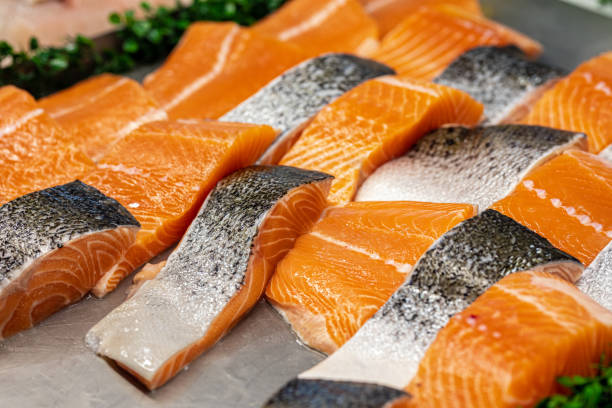Calories in salmon fillet can vary based on the size of the fillet and the cooking method used. However, salmon is generally a nutritious and protein-rich food that can be a healthy addition to a balanced diet. In this article, we will explore the calorie content of salmon fillet, the nutritional benefits of including salmon in your diet, and some ideas for incorporating salmon into your meals.
One of the main benefits of salmon is its high protein content. A 3.5-ounce (100-gram) serving of raw salmon contains approximately 17 grams of protein. Protein is an essential nutrient that helps to build and repair tissues in the body, as well as support immune function and provide energy.
In terms of calories, a 3.5-ounce serving of raw salmon contains approximately 177 calories. This serving size is equivalent to about half of a small salmon fillet. The calorie content of salmon can vary based on the size of the fillet and the cooking method used. For example, a larger fillet or a fillet that has been grilled or fried may contain more calories than a smaller fillet or a fillet that has been baked or steamed.
Despite its relatively high calorie content, salmon can still be a healthy addition to a balanced diet. This is because salmon is also a rich source of several important nutrients, including omega-3 fatty acids, vitamin D, and selenium.
Omega-3 fatty acids are a type of healthy fat that is important for heart health and brain function. Salmon is one of the best sources of omega-3s, with a 3.5-ounce serving providing approximately 1.9 grams of these beneficial fats.
Vitamin D is a nutrient that helps to regulate calcium and phosphorus in the body, which are important for maintaining healthy bones. Salmon is a good source of vitamin D, with a 3.5-ounce serving providing approximately 22% of the daily recommended intake for this nutrient.
Selenium is a trace mineral that is important for thyroid function and helping to prevent cell damage. Salmon is a good source of selenium, with a 3.5-ounce serving providing approximately 34% of the daily recommended intake for this nutrient.
In addition to its nutritional benefits, salmon is also a versatile food that can be incorporated into a variety of dishes. Here are a few ideas for adding salmon to your meals:
Grilled salmon: Marinate salmon fillets in a mixture of olive oil, lemon juice, and your favorite herbs, then grill them on the barbecue until they are cooked to your desired level of doneness.
Baked salmon: Place salmon fillets in a baking dish, then bake them in the oven at 375°F for about 10-15 minutes, or until they are cooked to your desired level of doneness.
Pan-seared salmon: Heat a little oil in a pan over medium-high heat, then place salmon fillets in the pan and cook for about 3-4 minutes on each side, or until they are cooked to your desired level of doneness.
Salmon salad: Mix together cooked salmon, chopped vegetables, and your favorite salad greens, then dress with a mixture of olive oil, lemon juice, and herbs.
In conclusion, salmon is a nutritious and protein-rich food that can be a healthy addition to a balanced diet. While the calorie content of salmon can vary based on the size of the fillet and the cooking method used, salmon is a rich source of nutrients such as omega-3 fatty acids, vitamin D, and selenium. By incorporating salmon into your meals, you can enjoy the many health benefits of this tasty and versatile food.

 Home
Home Health
Health Diet & Nutrition
Diet & Nutrition Living Well
Living Well More
More












